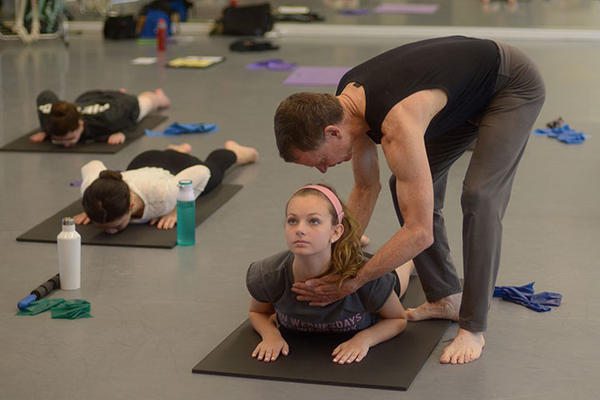
Dancers are known for their svelte figures, but they often aren’t making the right dietary choices to fuel their bodies for long, intense performances, Florida State University researchers found in a new study.
“It is fairly well recognized that dancers often have peculiar eating habits, and they do this in an effort to have the ‘dance look’ for the aesthetics of dance,” said Associate Professor of Exercise Science and Nutrition Michael Ormsbee. “Essentially, we investigated these dancers from a whole new perspective and found that just like traditional athletes that require more protein in their diets, the dancers need that as well.”
Ormsbee and his former doctoral student Ann Brown explained their findings in the Journal of Sports Science.
The research team, which also included FSU School of Dance Professor Tom Welsh, examined the nutritional habits of 25 dancers from the FSU School of Dance and Tallahassee-area dance studios. They tracked the dancers’ eating habits using three-day food logs to investigate their typical calorie and nutrient intake.
They found that while the dancers typically ate enough carbohydrates and fats, they did not consume enough overall calories or protein. They also found that those dancers who regularly consumed higher amounts of protein and total calories had lower body weight and body fat compared to those who consumed fewer calories and less protein.
Brown, who trained as a dancer and is now an assistant professor at the University of Idaho, noted that good nutrition is critical for dancers who are often pushing their bodies to the limit.
“Nutrition for dance is often overlooked due to the uncomfortable conversations that may surface regarding body image,” Brown said. “Beginning these conversations was another purpose for the study. Making the collegiate dance population aware and more comfortable with the idea of using nutrition as fuel for improving performance, similarly to how we treat all other athletes, is critical to make a change within this community.”
Ormsbee and Brown have followed up this pilot study with another investigation where they actually put dancers on a higher protein diet for 12 weeks to see how it affects body composition, performance and overall health.
Ormsbee has long looked at protein intake of athletes, but he said Brown brought a different perspective when she joined his lab as a graduate student given her background in dance.
Welsh also added his experience as a professor in the School of Dance where he has developed cutting-edge dancer wellness programs to help collegiate dancers reduce their risk of injury.
“There can be some confusion about whether dancers are artists or athletes; in fact, dancers are both,” Welsh said. “One of America’s most famous modern dancers, Martha Graham, called dancers ‘God’s athletes.’ Whatever label one may choose, it is clear that dancers need to nourish their bodies — the instruments of their art form — and fuel their training and performance.”
Other authors on the study are former FSU graduate student Christopher Bach and undergraduates Giuliana De Almeida and Shawn Leonard.




